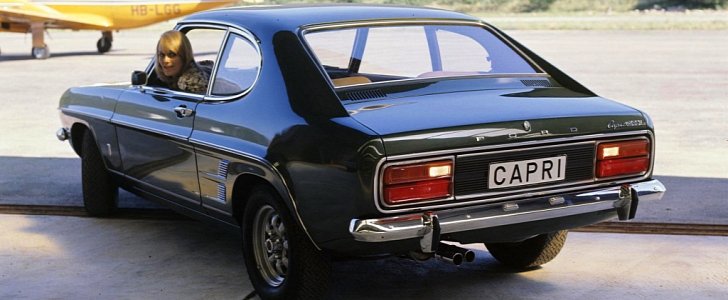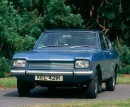Introduced in 1968 to high acclaim from European customers, the Capri was more than the smaller sibling of the Mustang. Nearly 1.9 million examples of the breed were sold until December 1986, and back in the olden days, customers could even get a V4 engine.
The 60-degree Taunus engine was also shared with various Saab models, the Matra 530, and the Mustang I experimental roadster from 1962, but the Capri could also be had with an inline-four engine, V6, and the 5.0-liter Windsor V8 in limited numbers only in South Africa.
Following its discontinuation, Ford of Europe couldn’t do better than the Puma front-driven coupe. Over on the other side of the Atlantic, the Probe was originally intended to serve as the fourth generation of the Ford Mustang and a competitor to the Integra and Celica.
While the Puma has been brought back from the annals of automotive history as a subcompact crossover with mild-hybrid technology, the Capri still finds itself in limbo. On the other hand, there is talk within the Blue Oval about reviving the nameplate in the 2020s.
Speaking to Autocar.co.uk, a gentleman going by the name of Amko Leenarts believes that the 21st century Capri needs “to be in the zeitgeist and has to fit, and work as a plural, not just exist as something for a designer to bring back an old car.” The head honcho of the European design studio is right in every respect, but still, the higher-ups in Michigan have the last word and the power to give the green light for series production.
“I’m not pushing that idea [of making a concept] too much,” added Leenarts, which is a pretty strong statement to make when Ford is cutting back on passenger cars in the United States to satisfy the increasing demand for crossovers, SUVs, and pickup trucks. It’s also worth remembering that the Mustang is available in left- and right-hand drive pretty much all across the world, therefore defeating the purpose of the Capri in the UK and EU.
Regarding the zeitgeist mentioned beforehand, today’s automotive industry is in a transitional phase. Electrification and automation are probably the most important technological aspects, and as you already know, passenger cars aren’t as popular as they were in the ‘90s and ‘00s.
Following its discontinuation, Ford of Europe couldn’t do better than the Puma front-driven coupe. Over on the other side of the Atlantic, the Probe was originally intended to serve as the fourth generation of the Ford Mustang and a competitor to the Integra and Celica.
While the Puma has been brought back from the annals of automotive history as a subcompact crossover with mild-hybrid technology, the Capri still finds itself in limbo. On the other hand, there is talk within the Blue Oval about reviving the nameplate in the 2020s.
Speaking to Autocar.co.uk, a gentleman going by the name of Amko Leenarts believes that the 21st century Capri needs “to be in the zeitgeist and has to fit, and work as a plural, not just exist as something for a designer to bring back an old car.” The head honcho of the European design studio is right in every respect, but still, the higher-ups in Michigan have the last word and the power to give the green light for series production.
“I’m not pushing that idea [of making a concept] too much,” added Leenarts, which is a pretty strong statement to make when Ford is cutting back on passenger cars in the United States to satisfy the increasing demand for crossovers, SUVs, and pickup trucks. It’s also worth remembering that the Mustang is available in left- and right-hand drive pretty much all across the world, therefore defeating the purpose of the Capri in the UK and EU.
Regarding the zeitgeist mentioned beforehand, today’s automotive industry is in a transitional phase. Electrification and automation are probably the most important technological aspects, and as you already know, passenger cars aren’t as popular as they were in the ‘90s and ‘00s.











